
Space Cloud allows you to transform the request/response body easily using Go templates.
Many times, your services might be expecting a request body with a different structure as compared to what your clients or Space Cloud would be providing.
For example, you might have an existing email service that sends a welcome email to users on signup. Let’s assume that this email service requires a request with the following body:
{
"name": "<name>"
"email": "<email-address>"
}
Now you want to use it with Space Cloud’s event triggers. However, the webhook request body that Space Cloud posts have the following structure:
{
"specversion": "1.0-rc1",
"id": "<unique-uuid>",
"type": "<event-type>",
"source": "<space-cloud-node-id>",
"time": "<date-string>",
"data": {
"db": "<db-type>",
"col": "<collection-name>",
"docId": "<document-id>" ,
"doc": { // Assuming that the users table consists of `id`, `name` and `email` fields.
"id": "<user-id>",
"name": "<name>",
"email": "<email>"
}
}
}
Now instead of changing your email service or making a wrapper service, you can simply specify a transformation in Space Cloud to transform the above webhook request body.
Similarly, in many cases, you might want to transform the response body as well.
For example, you might have a remote service with an endpoint that hits Stripe’s API to fetch the status of the latest invoice of a subscription. The Stripe API returns a big nested object with the status field being in the latest_invoice.status field.
However, you might simply want to return the status field at the root level to the client. You can once again use transformation in Space Cloud to transform the response body that would be sent to the client.
Space Cloud allows you to template out the desired request/response body using Go templates. You must specify the template either as a JSON or a YAML string.
Space Cloud executes the specified go template to generate the templated output at runtime. It then parses the templated output depending on the template format (JSON/YAML) and uses that parsed output as the request/response body.
Go templates are extremely powerful. You can use flow control blocks (if else, loops, etc.), variables, functions and much more in Go templates.
If you are new to Go templates, read this article on using go templates.
The templates you specify will have access to certain pre-defined variables. For example, the variable args contains the current request/response body before the transformation.
For example, let’s say that you want to forward the user.id field provided in the request body as userId. Here’s how you can do it using the args variable:
{
"userId": "{{.args.user.id}}"
}Check out the complete list of available variables.
Space Cloud also comes packed with certain helper functions which you can use in templates.
Head over to the Eventing section of the Mission Control:
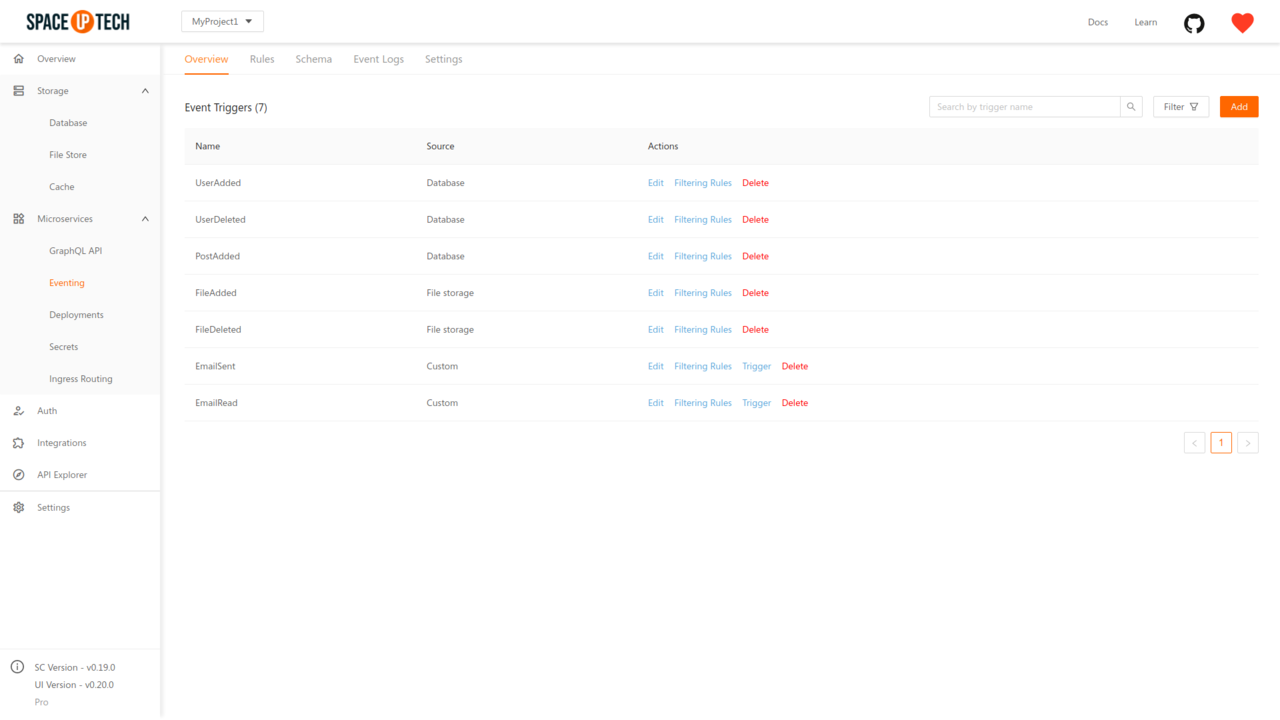
Click the Edit button beside the required event trigger to open the event trigger configuration modal.
Open the Advanced section and scroll below to Apply Tramsformations section:
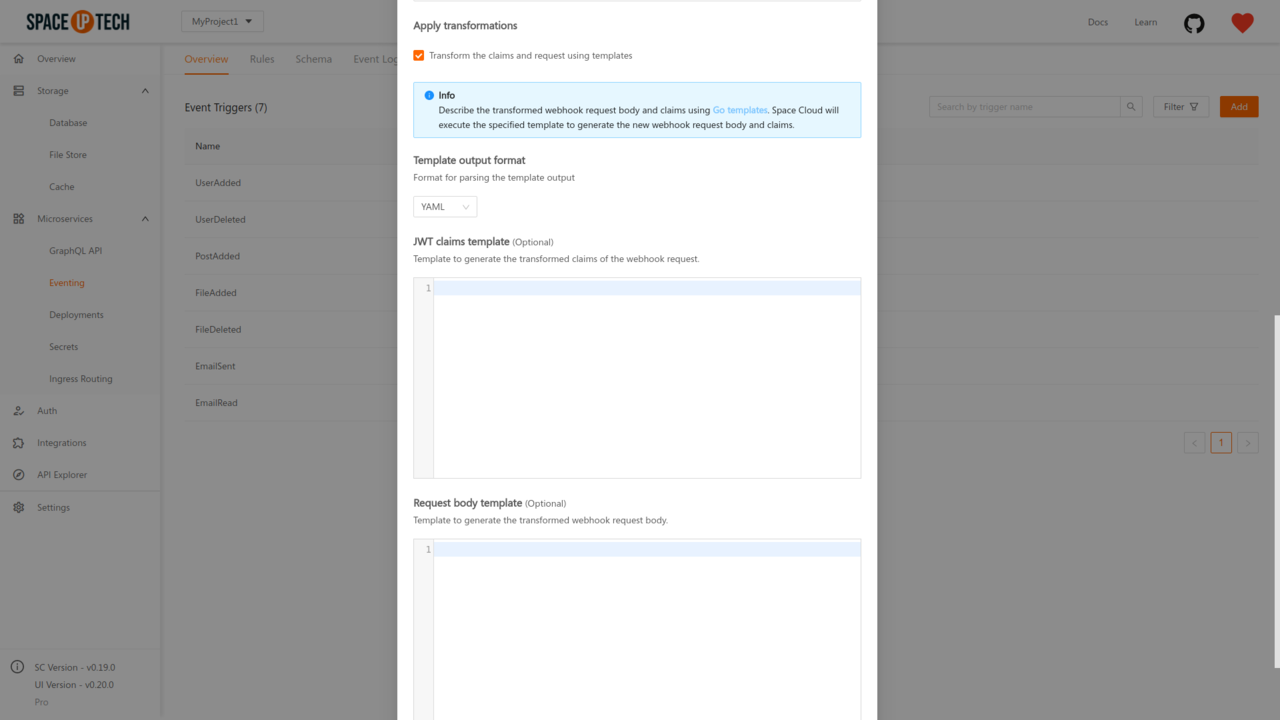
After checking the checkbox, you can specify the template for webhook request as well as the template output format (JSON/YAML).
Head over to the GraphQL API section in Mission Control:
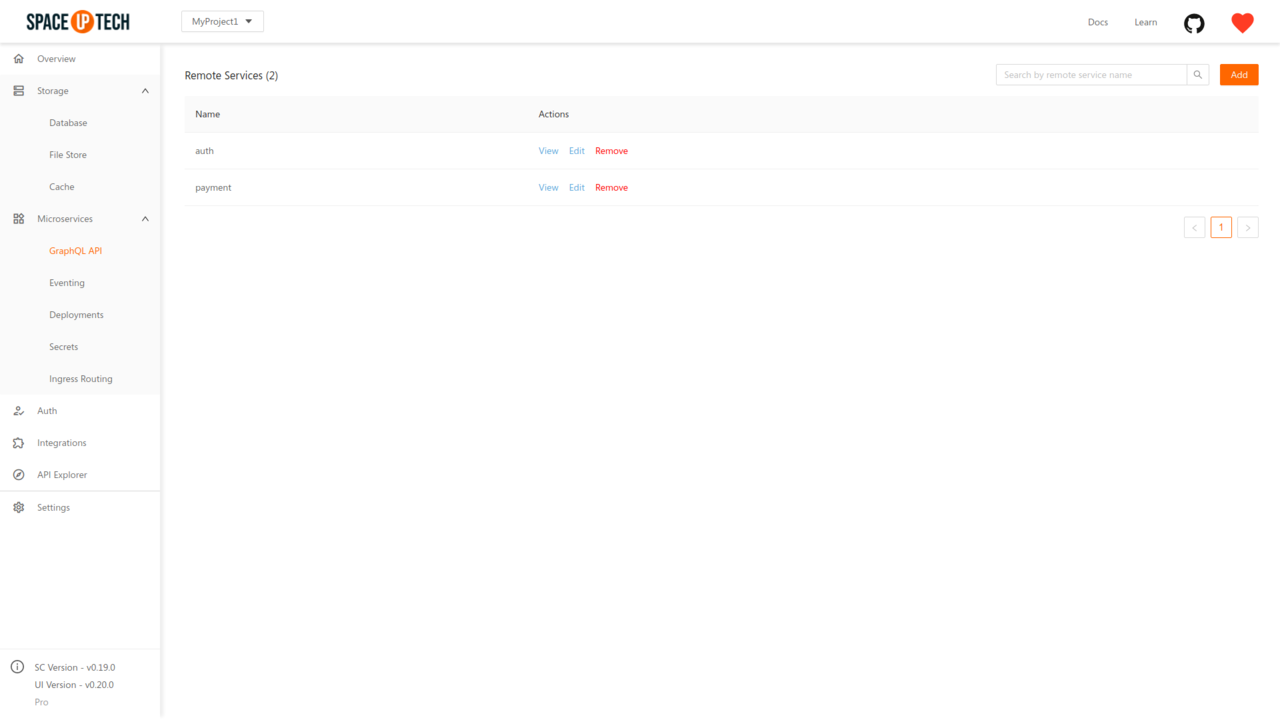
Click the View button beside the required service to view the endpoints of that service:
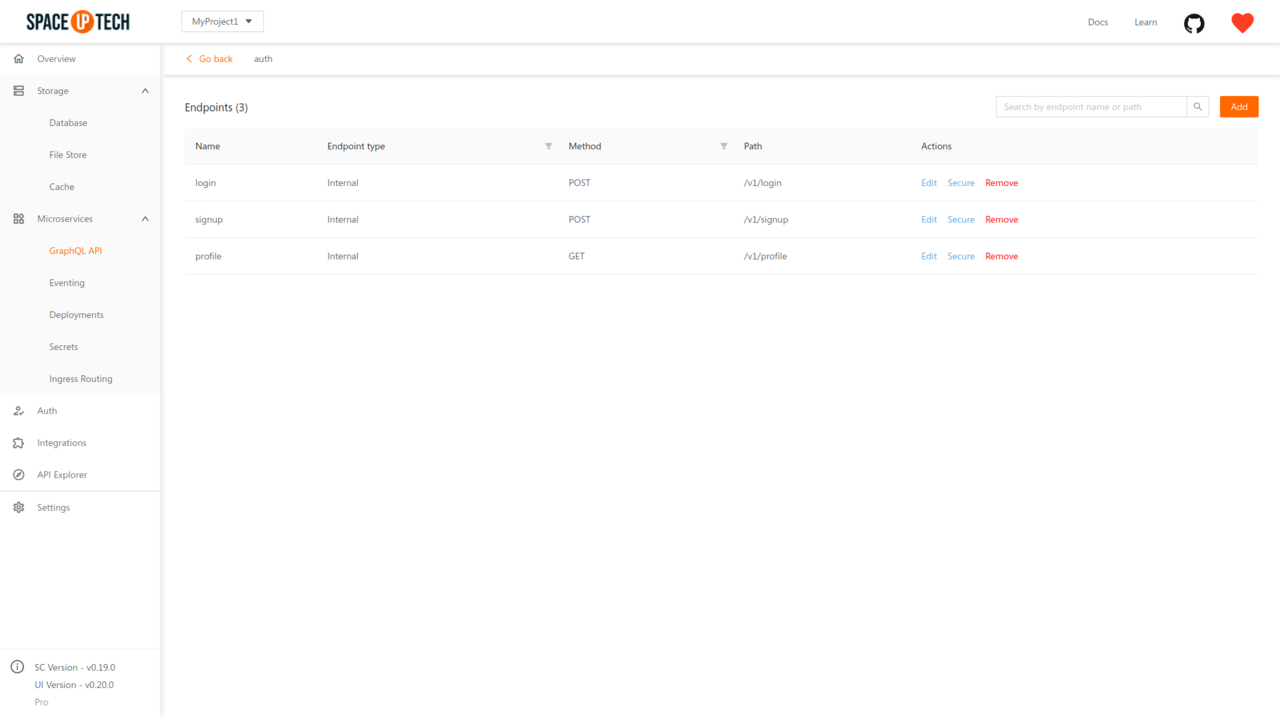
Open the Advanced section of the endpoint configuration and scroll below to the Apply transformations section:
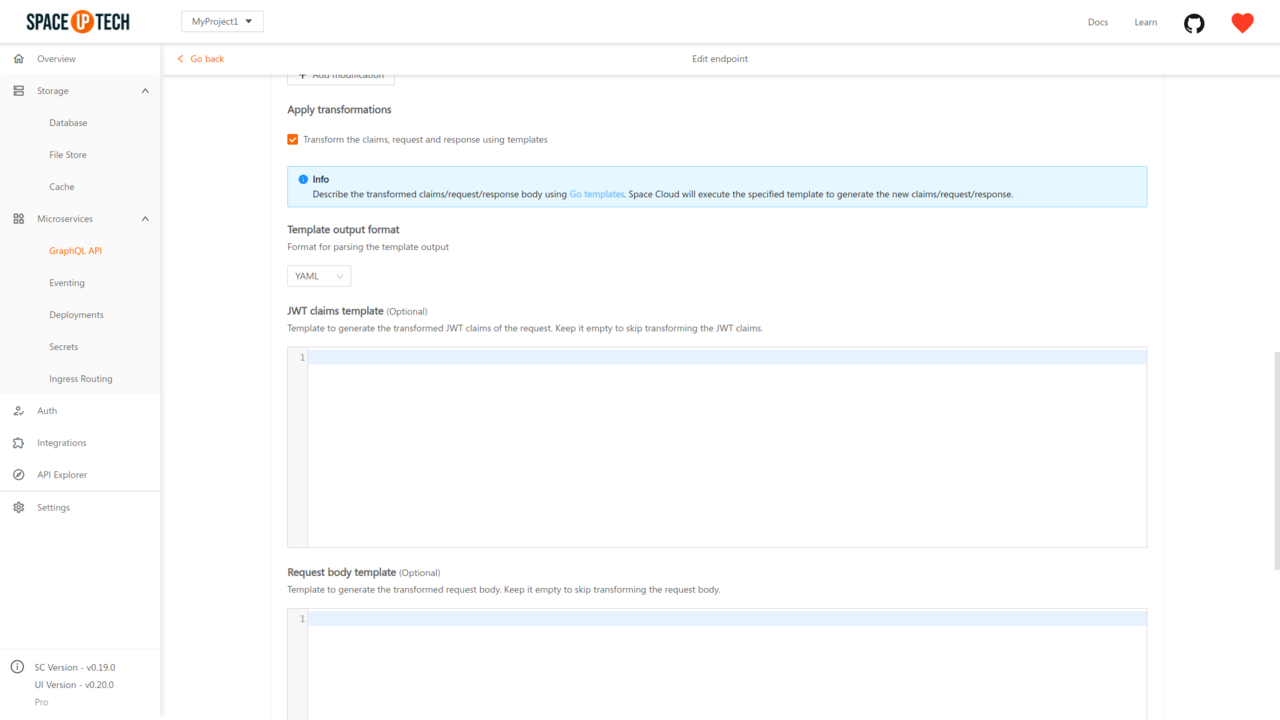
After checking the checkbox, you can specify the templates for request/response body as well as the template output format (JSON/YAML).
Head over to the Ingress Routing section in Mission Control:
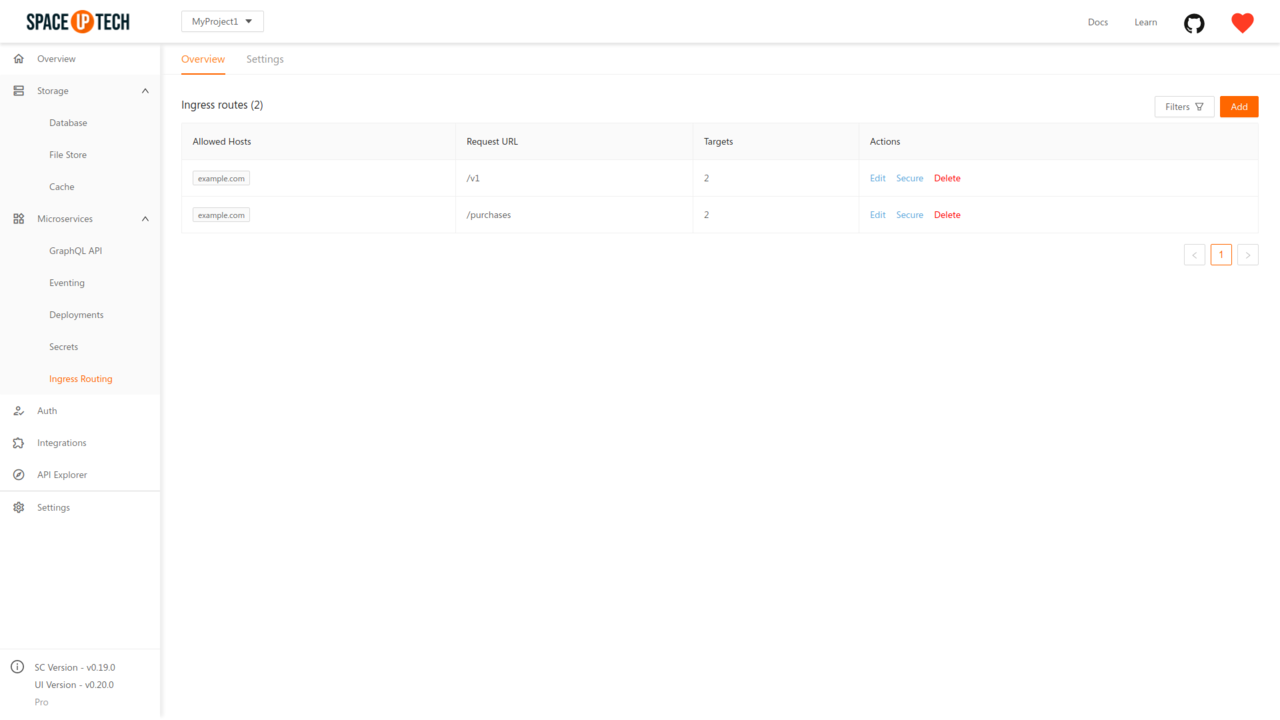
Click the Edit button beside the required ingress route to view its route configuration.
Open the Advanced section of the routing config and scroll below to the Apply transformations section:
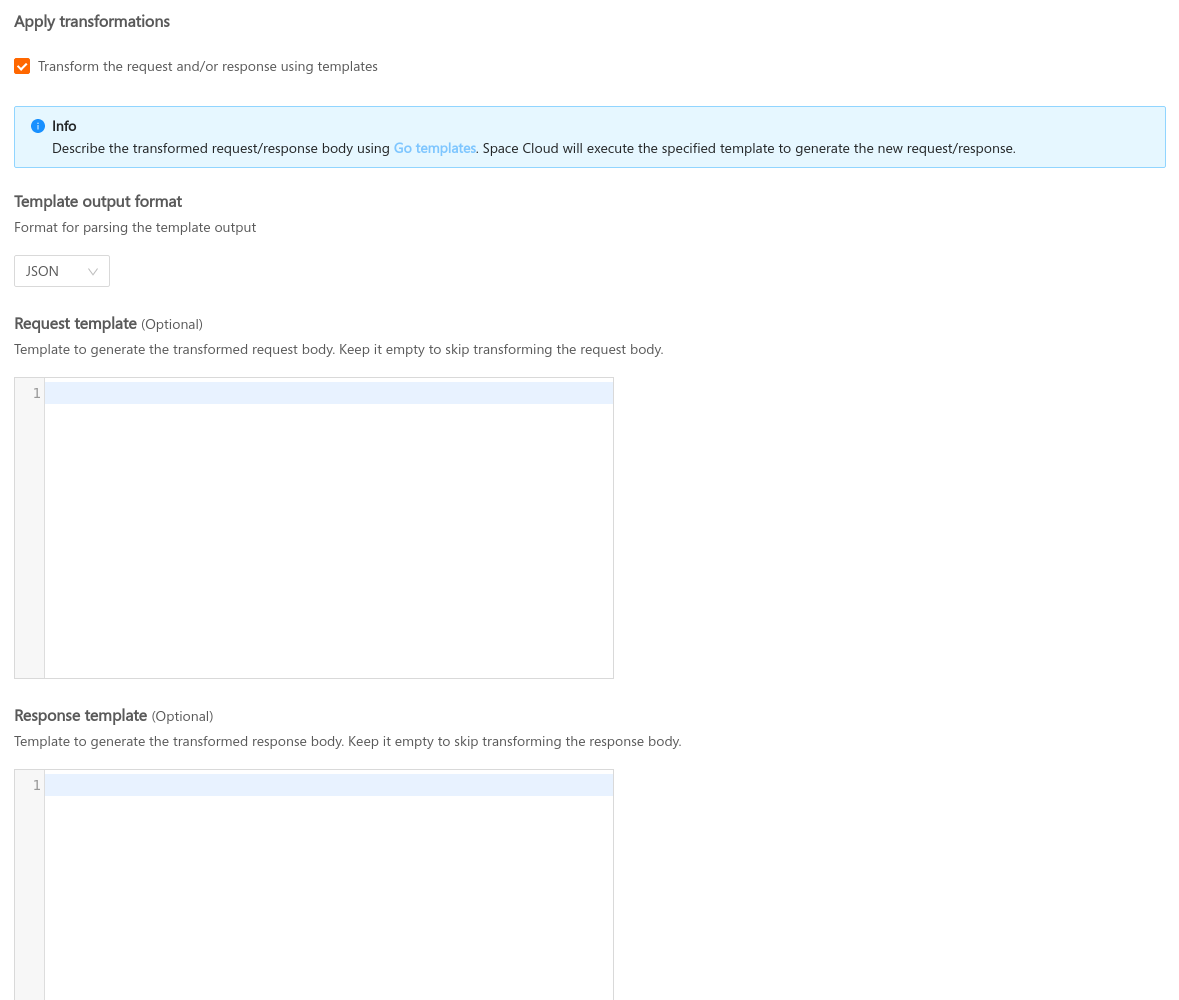
After checking the checkbox, you can specify the templates for request/response body as well as the template output format (JSON/YAML).